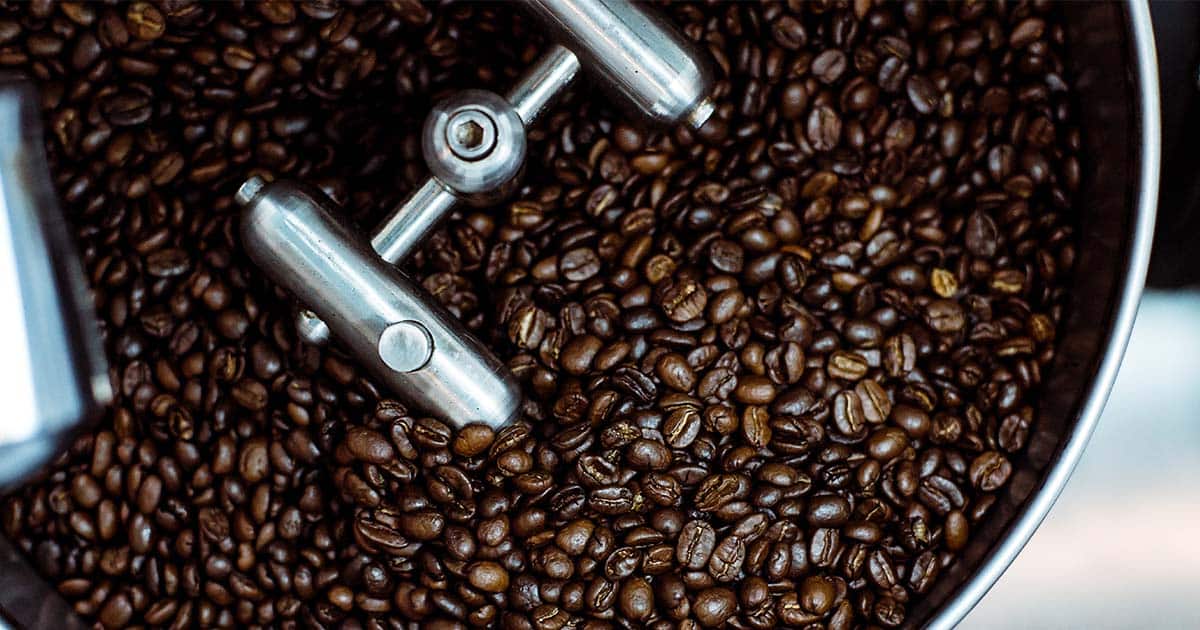The world is heavy with opinions and a longing to debate over which of them is superior. Topics like Coke vs. Pepsi, pancakes vs. waffles, Lennon vs. McCartney, and Jordan vs. LeBron may be top of mind, but what about the greatest debate of all: light roast vs. dark roast coffee. We all have our preferences in which we like to drink, but what are the true differences between the two and which is more enjoyable to drink?
Light Roast vs. Dark Roast: How Are They Made?
Coffee roasting is the most influential factor in how a coffee will taste. It transforms green beans into the aromatic and flavorful coffee we crave. However, beans can be roasted in many different ways and at different levels to achieve the flavorful profile we are looking for. Additionally, it also changes the beans’ physical attributes.
Many coffee roasters use enclosed drums that tumble the beans as it is being heated. These machines are fairly precise on how much heat is being introduced into the roasting process. Moreover, they are usually run manually, meaning we have complete control over the batches and can determine how the roast runs.
When it comes to roasting, there are some key things you must look out for when it comes to creating dark and light roasts. Such as:
- Light Roasts: This type of coffee is characterized by its light brown color, lack of oil, and light body. These beans are typically roasted at a temperature of 350º–410º. When roasting begins, the beans will usually pop at around 350º. The first pop you hear is your way of knowing that the beans have reached a light roast.
- Dark Roasts: This roast is characterized by its dark brown, almost blackened color. The beans’ oil is drawn out to the point where it glosses the surface. To be considered a dark roast, they must be roasted at a temperature of anything higher than 440º. If the beans are roasted hotter than 465º, the coffee will start to taste more and more like charcoal. Once you hear the second crack or pop, that’s when you know you’ve got a dark roast in the drum.
Light Roast vs. Dark Roast: The Flavor
Now that we’ve got the roasting process out of the way, let’s talk about what that does to the flavor of the beans. Since most flavors of the coffee are usually determined by how intensely the beans were roasted, you can expect different profiles from both roasts.
- Light Roasts: Since light roasts see less heat than their darker counterparts, they’re left with more moisture inside the bean, making it denser. A denser coffee bean means you will have more caffeine, more brightness, and more fruit and herbal flavor profiles. There will simply be more complexity in taste in a light roast.
- Dark Roasts: Since these beans stay in the roasting drum for a longer period and at higher temperatures, they lose a lot more moisture. This makes them less dense, less caffeinated, and more single-note in flavor. The complexities begin to disappear the longer it’s left to roast. But, if you love brews that taste like toasted nuts, caramel, and graham crackers, it’s always a treat.
Light Roast vs. Dark Roast: Ther Verdict
So, what’s truly the better roast? Neither.
Both are delicious and offer the different flavors we all look forward to when we brew our cups of coffee. Sure, we all have our preferences, but one is not better than the other. It all depends on what you’re looking for in your coffee. Do you want something more complex and high in caffeine? Go with the light roast. Do you want something more toasty and comforting in the morning? Dark roast it is. There is no wrong answer.
We all should end this light roast vs. dark roast debate, as both are exceptionally good.
Satisfy Your Soul with Mokas Cafe’s Coffee
Mokas Cafe was founded in Salina, Kansas over 15 years ago. Since our opening, we strive to create a worthwhile experience for everyone who walks through our doors with friendly customer service and delicious food and brews. One way we do this is by offering our guests the most flavorful coffee around and this starts with our coffee beans. Visit our locations page to find the nearest cafe to you!

